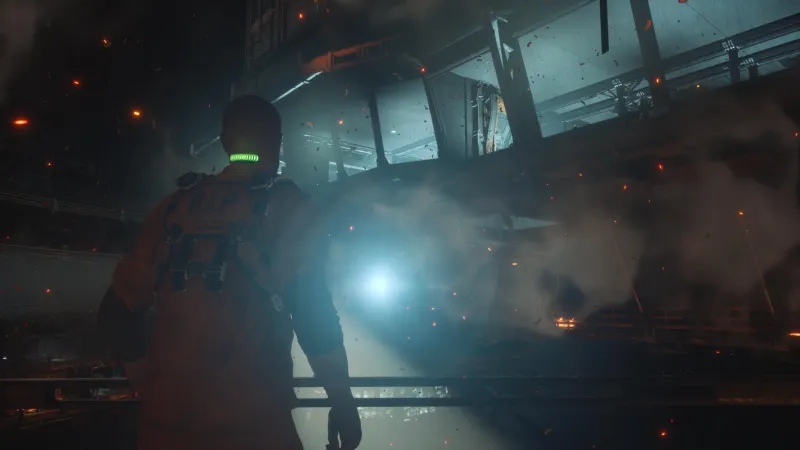The Callisto Protocol Review – Morsels Of Fun In A Far-Too-Familiar Space

Visceral released Dead Space nearly a decade ago. This survival horror game was inspired by the works of AlienAnd The Thing. If you’ve ever yearned for a return to its mix of sci-fi and horror, or if you want a near-identical experience to Schofield’s first survival horror hit, you’re in luck.Schofield’s latest book, The Callisto Protocol is very close to Dead Space. This can be for good and bad. Unfortunately, though, it’s far too familiar. While there are some glimpses of greatness during its opening hours, the eight-hour period that follows is tedious and predictable.
The Callisto Protocol is set primarily in Black Iron Prison and the surrounding area on one of Jupiter’s moons, Callisto. Correctional officers place protagonist Jacob Lee in Black Iron Prison after a crash landing. Something goes wrong; Jacob escapes his cell, and shortly after, meets his first biophage, a highly-mutated monstrosity who’s more fleshy pustulating gore than human.

The game introduces its unique melee combat system here, and it’s one of the highlights. Dodging by pulling left and right on the control stick is engaging, as are the heavy and slow swings of Jacob’s melee attack. With the right timing and precision dodges each hit has an enormous impact and I was able take down all my foes using only this electric prison baton. Guns are later folded into the mix, but they’re not as satisfying as the baton, nor do they meaningfully differentiate themselves from one another. It felt essential to upgrade my baton in order to make it more useful. But ammo is readily available if one wants to face off with guns-blazing enemies. The telekinesis-like pull-and-throw GRP system is useful and fun, but there’s disappointingly little to do with it beyond throwing enemies into the same three types of insta-death machinery, off a ledge, or away from you.
Radio characters ask you questions through the radio. HereAnd There areYou show up and something happens. Now you have to deal with them. This location instead. In a matter hours, I had figured out most of the story beats and was being served breadcrumbs. Sure, things happened, but I rarely saw a semblance of the game’s overarching story until the final hour, at which point it felt like a rushed dump of information. While Dani’s story, which weaves in and out of Jacob’s throughout the duration of the game, comes to a satisfying conclusion, Jacob’s does not, ending with a scene that feels inorganically enticing and designed to ensure I purchase the upcoming story DLC.
The final boss before this disappointing climax is an exhausting and repetitive fight that feels like those of yesteryear; the one every game had to include, even if it didn’t prove necessary. This wasn’t the only disappointing boss. I was left feeling disappointed by the lack of variety in all of these bosses. It is possible to fight the exact same enemy as bosses multiple times through the game. However, you will be fighting in different locations. You can be killed by most bosses in just one hit. This takes the pressure off survival horror. I wasn’t desperate to find ammo or a health pack to survive by the skin of my teeth; I was just jogging away to ensure its hits didn’t land close to me.
Bad checkpoint systems only add to my frustration. Insta-kill means that you must restart the battle from the beginning, and even the last fight. If there are enemies you must kill before you can start the next battle, then you will need to repeat that. The same goes for ammo, audio logs, and other resources, as well, even if you save right where you’d like to pick up post-death after doing this kind of preparation. Standard enemy encounters are also plagued by poor checkpointing, and quickly become stale.
Listening to audio logs, which add small touches of needed flavor to the area you’re playing through, requires you to stay in the log menu, and you can’t move or search the environment while listening. While the animations of death are gruesome and exciting, there is not much variety. They’re buggy, too, and some death scenes are drastically more interesting to watch play out than others. A biophage pulling Jacob’s eyes out of the sockets, for example, is great. It’s not funny to watch Jacob being thrown on the ground by an enemy in a comical and unintentionally humorous ragdoll-like manner.
While gun animations that play during weapon switching look great at the beginning, you will have to endure each one until you can use your new weapon. The animation will end if you hit the reload button too soon or aim too quickly. In this case, your weapon of choice returns. This is frustrating during tense combat encounters where I’m flipping through my handful of weapons to find the right one. A unique quick-fire mechanic that auto-locks onto an enemy’s weak point at the end of a melee combo is a nice addition to the combat’s systems, but if your equipped weapon is out of ammo or requires reloading and you don’t realize it, you hit fire only for nothing to happen, leaving you open for damage. These are the thousand-cuts that kill The Callisto Protocol.
The Callisto Protocol still does a lot of the same things that Dead Space did. And to that end, there are moments of fun, even if, in contrast, they’re light on genuine terror. I’m okay with The Callisto Protocol being another version of its spiritual predecessor, but it struggles to nail even the basics. As a result, I’m underwhelmed, annoyed, and disappointed. This isn’t the place to go if you want more of The Callisto Protocol’s second chance at making a survival horror sci-fi series, or something that appreciates how far we have come in gaming since 2008.
#Callisto #Protocol #Review #Morsels #Fun #FarTooFamiliar #Space








